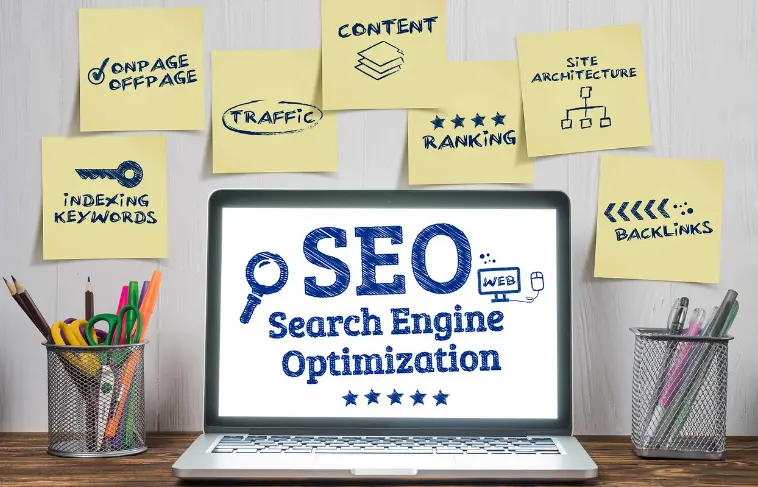Chapter 1: Unraveling the Mysteries of SEO
As you embark on your journey into the vast and ever-evolving world of digital marketing, one If you’re venturing into the expansive, dynamic universe of digital marketing, you’ll likely come across an omnipresent acronym – SEO. SEO, or Search Engine Optimization, has woven itself into the very fabric of online business strategies. But what is SEO, and why does it hold such pivotal importance in this digital era?
At its heart, Search Engine Optimization is a well-orchestrated process designed to elevate the visibility of a webpage or website within the unpaid, or ‘organic’, search engine results. Similar to the ‘earned’ or ‘natural’ results, these rankings wield the power to substantially enhance a business’s digital reach.
The realm of SEO stretches across various tactics and strategies, all meticulously crafted to render a website appealing to search engines. Efforts towards SEO take into account constantly shifting search engine algorithms, evolving ranking factors, and user search behaviors, all unified towards one objective: to earn your website a place on the first page of search results.
However, the significance of SEO isn’t confined to aligning your website with search engine preferences. It encompasses enhancing the user’s experience and the usability of a site. In the fiercely competitive digital space, prioritizing both search engines and users is an absolute necessity.
Consider your optimized website akin to a brick-and-mortar store situated on a bustling street; easy for customers to locate, explore, and engage in business. SEO acts as a digital strategist, ensuring your ‘storefront’ is accessible and appealing to your target audience.
The greatest shop displays often result from a blend of creativity and an astute understanding of customer desires. Similarly, effective SEO demands technical proficiency paired with a deep grasp of your audience’s needs. It’s a balancing act, optimizing for search engine algorithms while ensuring the delivery of tangible value to your audience.
With its diverse range of tactics – from optimizing keywords and building links to creating a mobile-friendly website and providing high-quality, pertinent content – SEO may initially appear as a complex labyrinth. However, each tactic plays a crucial role in driving organic traffic to your site, improving your online visibility, and ultimately enhancing customer engagement and sales.
Every online search signifies an opportunity to connect with a potential customer. Thus, SEO has transitioned from being a desirable strategy to an essential one for businesses looking to secure their digital footprint.
As we further traverse the enigmatic world of SEO, keep in mind that the objective extends beyond merely pleasing search engines. Fundamentally, SEO is about comprehending and catering to your audience’s needs, improving your website’s usability and reliability, and curating an online presence that accurately mirrors your business and its values.
Chapter 2: The Mechanism of SEO

How does SEO work? might be the next logical question to ponder. While the surface level answer is straightforward, there’s a complex network of processes behind the scenes.
Search engines use ‘bots’ or ‘crawlers‘ to explore the web, going from site to site, collecting information about each page, and putting them in an index. Algorithms then analyze these indexed pages based on hundreds of ranking signals or factors to determine the order pages should appear in the search results for a given query.
These algorithms take into account factors such as the relevancy and usability of pages, the trustworthiness of the website, and the overall user experience. Your SEO efforts aim to optimize your website based on these ranking signals to secure a higher position on the SERPs.
Chapter 3: Building Your SEO Strategy
The term SEO strategy might sound daunting, especially if you’re new to the game. But, once you understand the components, it’s less of an uphill climb.
An effective SEO strategy is your comprehensive plan designed to improve your website’s ranking on SERPs. It involves key steps like performing keyword research to find what your potential customers are searching for, optimizing your website’s structure (on-site SEO) and content around these keywords, building quality backlinks (off-site SEO), improving user experience, and tracking your results and adjusting your strategy accordingly over time.
Chapter 4: The Essential Tools for SEO Success

Embarking on your SEO journey would be impossible without certain SEO tools. These tools help automate and streamline your SEO processes, saving you valuable time and providing critical insights.
Google’s Keyword Planner or SEMrush can help you uncover the best keywords to target. For site audits to identify any technical SEO issues, tools like Ahrefs or Moz are indispensable. Google Search Console lets you monitor your site’s performance in the SERPs.
One essential tool often overlooked by beginners is a Website traffic checker. This tool tracks your site’s traffic sources and volumes, helping you measure the success of your SEO efforts. Google Analytics, for instance, offers comprehensive data about your website traffic, giving you insights into your audience’s behavior, which can guide your future SEO tactics.
Chapter 5: In-House SEO vs Outsourcing: The Eternal Dilemma
The debate on whether to outsource SEO or keep it in-house is a long-standing one. The decision rests on several factors.
For small businesses or startups with limited budgets, managing SEO in-house may be the most cost-effective choice. It offers better control and enables quick decision-making. On the downside, it demands a steep learning curve and requires dedication of resources.
For medium to large enterprises, outsourcing may be a better option. SEO agencies bring their expertise, experience, and established processes, potentially accelerating the results. However, it is crucial to choose a reputable agency that aligns with your business goals.
